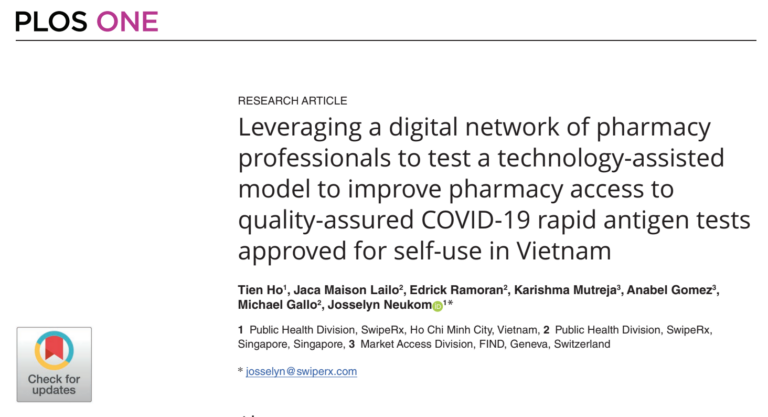Around the world, pharmacists are playing a larger role in healthcare teams alongside doctors and nurses. Though they have long been known for their expertise in dispensing medication, pharmacy professionals are slowly gaining more responsibility and involvement in public health. When pharmacists are included in healthcare teams they reduce health care costs for patients, other healthcare professionals, and governments.
1. Pharmacists protect patients and save money
Throughout Southeast Asia, patients most often visit retail pharmacies as their first contact with the healthcare system when seeking treatment. Already, pharmacists are successfully helping in other areas of public health, like offering smoking cessation services, promoting healthy diets, disease screening, and counseling patients. Pharmacists use their knowledge of pharmacology to keep patients informed, improving patient adherence and preventing serious, expensive complications that may come from non-adherence to medication.
Since pharmacy professionals in Southeast Asia tend to set up shop near their homes and work long hours, they have the time to communicate with patients in the community, understand them and their conditions, and better inform them of the purpose and side-effects of drugs they take. All of this is available without expensive, lengthy trips to hospitals or clinics, saving time and money for patients.
2. Pharmacists save time and money for their primary care teams
Because community and retail pharmacists are found throughout Southeast Asia in both urban and rural areas, they should be included in primary care teams, saving money and time for other healthcare professionals like doctors and nurses. Because they are skilled professionals, they can safely offer services like general health education, drug therapy, and screening. For example, studies in Thailand showed that pharmacy professionals screening for diseases like hypertension and diabetes were more successful in detecting disease than other primary care providers. Early detection and treatment saves both money and lives.
3. Pharmacists improve population health
People in many countries in Southeast Asia are aging before the country can reach “middle-income” status. Because of this, more of the population is using multiple drugs at a time to treat chronic diseases. Problems from drug non-adherence are expensive to the healthcare system, but preventable. Pharmacy professionals can play a useful role in improving drug adherence by working closely with community members to keep them informed. Using mClinica’s Connect, patients can receive medication reminders to their own mobile phones.
Looking forward, community pharmacists can protect patient health even from diseases common within developed countries, saving money for both patients and governments. In America, a study placing pharmacists in medical homes improved both blood pressure and overall adherence rates of patients.
It is important to equip pharmacists with the tools to improve community health so they make use their skills to save money for patients, fellow healthcare providers, and nations at large.
You might be interested in:
Improve medication adherence with digital patient assistance programs
Want to reduce childhood illness? Let pharmacists give vaccines.







